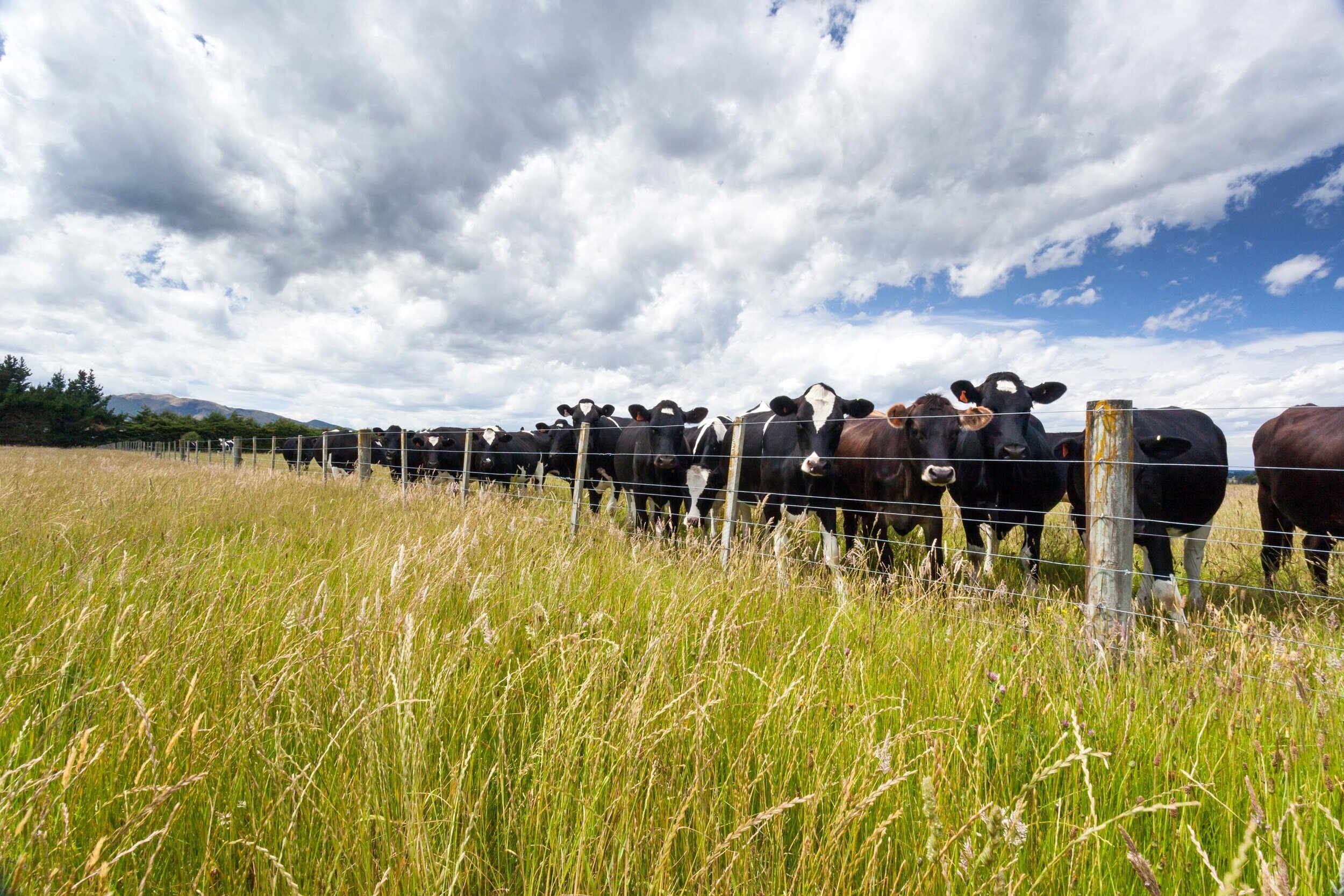
BVD Control
Why live with impacts of BVD on animal health, welfare, and production when we have the tools to cost-effectively remove it from your herd in as little as two years. Read more about the different options for controlling BVD in your herd and why national eradication can bring greater long term benefits.
What are the principles of BVD control
All BVD control strategies focus on eliminating the small number persistently infected (PI) in the cattle population since these animals are primarily responsible for BVD transmission. This means getting rid of existing PI animals in infected herds (Getting BVD Free) and taking measures to protect dams during pregnancy to prevent new PI animals from being created (Staying BVD Free) through the following steps:
Monitoring Herd BVD Exposure Status: Measuring BVD antibody levels in unvaccinated animals over 10 months of age can tell us whether animals are getting infected with BVD
Eliminating PI Animals in Infected Herds: Conducting PI hunts in herds with evidence of active infections will find and eliminate existing PI animals in the herd to stop BVD from spreading
Managing BVD Biosecurity Risks: Protecting your herd by reducing contacts with infected cattle or fomites from other herds can stop BVD from cross back over your farm boundary
Vaccinating to Prevent Fetal Infections: Vaccinating susceptible dams against BVD to prevent fetal infections if they get exposed to BVD during the critical stages of pregnancy
Checking for Breakthroughs in Biosecurity: Testing your replacement heifer calves and performing an annual bulk milk PCR can catch potential lapses in on-farm biosecurity
Your herd health veterinarians can help you work out which of the available BVD control options are best for your herd’s unique situation and how they can fit into your animal health calendar.
How do we control BVD in dairy herds?
Dairy production systems in New Zealand have several unique features that make it much easier to control BVD. Most dairy farms routinely sell bobby calves and surplus heifers (50% to 80% of the calf crop) within 7 days of being born. This will automatically remove any PI calves born into in these groups without the need to do anything special. There are also many opportunities to test replacement heifers before the start of the mating period such as at ear tagging or disbudding to make sure there are no PI animals around to infect the milking herd. Furthermore, bulk milk BVD testing offers a convenient and inexpensive means of screening the entire milking herd for evidence of active BVD infections.
Based on the results from economic analyses, the most cost-effective option for managing BVD in an average New Zealand dairy herd is to:
Perform an annual bulk milk PCR and ELISA to monitor herd exposure status for evidence that cattle are being infected with BVD either from PI animals within the herd or contact with infected animals from other herds
Test replacement heifer calves for BVD as soon as possible after birth to remove PI animals before they can infect other cattle and so that they aren’t raised as replacements
Double-fencing field boundaries to prevent transient infections in the milking herd can also help reduce the potential production impacts of BVD
This produces an estimated benefit:cost ratio of 2 with most herds able to clear infections in under 5 years. The main advantages to this approach are that it is a straightforward programme to implement and conducting annual testing of calves and bulk milk will automatically catch any PI animals that are introduced to the herd through lapses in biosecurity.
How do we control BVD in beef herds?
BVD control is more challenging in New Zealand beef herds primarily because calves remain with their dams for 6 to 8 months after birth. Any PI calves that are born into the herd will be present during the risk periods for generating new PI calves in the next breeding season. The rates of BVD transmission within infected herds that practice extensive grazing are too low to achieve adequate herd immunity from PI calves infecting dams prior to the start of mating. Since beef calves are not frequently handled before weaning, it also more logistically challenging to find and eliminate PI calves in a timely manner. Furthermore, by the time we can conduct a pooled serum antibody ELISA in replacement heifers over 10 months to check for BVD exposure, it is too late in the year to start a vaccination or testing programme to break the BVD cycle.
Based on the results from economic analyses, the most cost-effective option for managing BVD in an average New Zealand beef breeding herd is to:
Perform an annual pooled youngstock antibody ELISA to monitor herd exposure status for evidence that cattle are being infected with BVD either from PI animals within the herd or contact with infected animals from other herds
Vaccinate all replacement heifers and mixed-age cows prior to mating to prevent any PI calves that are born from infecting susceptible dams during mating
Double-fencing field boundaries to prevent transient infections in the breeding herd can also help reduce the potential production impacts of BVD
Similar to dairy herds, this produces an estimated benefit:cost ratio of 2 with most herds able to clear infections in under 5 years depending on the number of PI dams that are already present in the herd and the rate they are removed through routine culling. The main advantage to this approach are that it will automatically protect against fetal infections if there are lapses in biosecurity that resulted in the birth of a PI calf or other exposures to BVD from outside sources.
Individual testing and the benefits of a lifetime status
The BVD Steering Committee emphasizes the importance of BVD control in NZ and acknowledges that individual animal testing is an important part of the strategy for many herds with BVD control plans. Increasing the proportion of the national herd tested will likely reduce prevalence of Persistently Infected animals (PIs) and hence incidence of BVD. Recording a lifetime status based on this testing would simplify the identification of PI animals in the case of a BVD incursion and should increase the resale value of stock. As more animals have a lifetime status recorded, it will reduce the risk of new introductions into naïve herds, help with stock purchasing decisions, and lead to better BVD management throughout NZ.
Why is national BVD eradication important?
With the diagnostic tests and vaccines we have available, it has never been easier to break the BVD cycle in infected herds. However, with the current level of disease in the cattle population and with poor biosecurity practices on farm, it is estimated that at least 5% of herds are experiencing new BVD outbreaks each year. The ongoing costs of testing and vaccinating animals in negative herds to make sure BVD doesn’t get back in once it’s gone adds an extra $40-$50 million per year on top of the significant production losses already being experienced by infected herds. This is a big driver behind the continued efforts to get a national control programme in place for New Zealand.
Check your understanding
Answer the questions below to check how well you understand the basics of BVD Biology.
Check Answer
The correct answer is (a).
In order to break the BVD cycle, we need to eliminate all PI animals before they have the chance to infect susceptible pregnant dams during the critical time period for generating new PI calves. Vaccination is an important tool for herds that cannot remove PI animals fast enough or for herds that can’t prevent susceptible dams from being exposed to the virus from outside sources.
Check Answer
The correct answer is (a).
Natural vaccination is not a good strategy for controlling BVD. Firstly, not all susceptible animals may be exposed prior to the breeding seasons, which puts them at risk of becoming infected when they are most likely to have serious reproductive complications. Secondly, BVD infections can cause short-term decreases in milk yields, reduced growth rates, and increased susceptibility to other infectious diseases, which can have significant impacts on the herds. Thirdly, as long as there is a PI animal in your herd, you are at risk of causing outbreaks in other susceptible herds.
Check Answer
The correct answer is (a).
Based on the results from the computer simulation models to evaluate the cost-effectiveness of BVD eradication in New Zealand, the main reason why BVD has become widespread across the country is through ongoing disease transmission between herds. Small improvement in biosecurity can have a major impact on slowing the spread of disease.
Check Answer
The correct answer is (a).
BVD control in New Zealand is currently strictly voluntary and it is up to farmers to decide what measures they want to take in their herds.
Check Answer
The correct answer is (e).
In order to eradicate BVD from New Zealand, we first need to know where the virus is located in the country and then make plans to eliminate it from positive herds while preventing outbreaks in negative herds. It is important to monitor herd status over time to identify and respond to new outbreaks quickly. While vaccination is likely to be an important tool in New Zealand, it will be far more cost-effective to strategically vaccinate at-risk dams rather than vaccinating all susceptible cattle.




